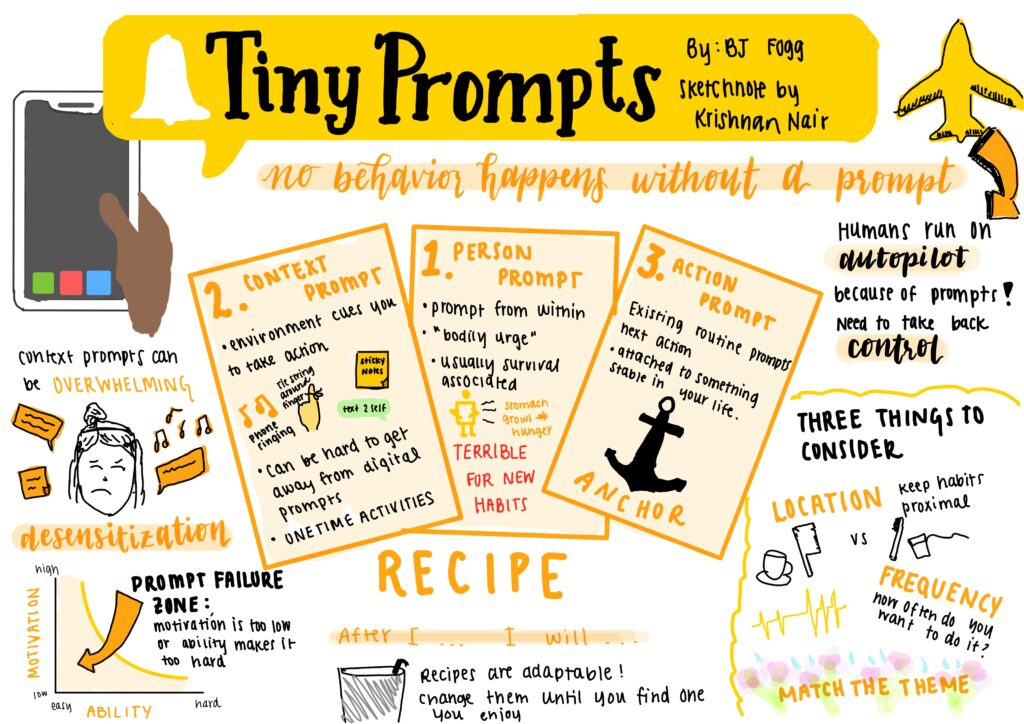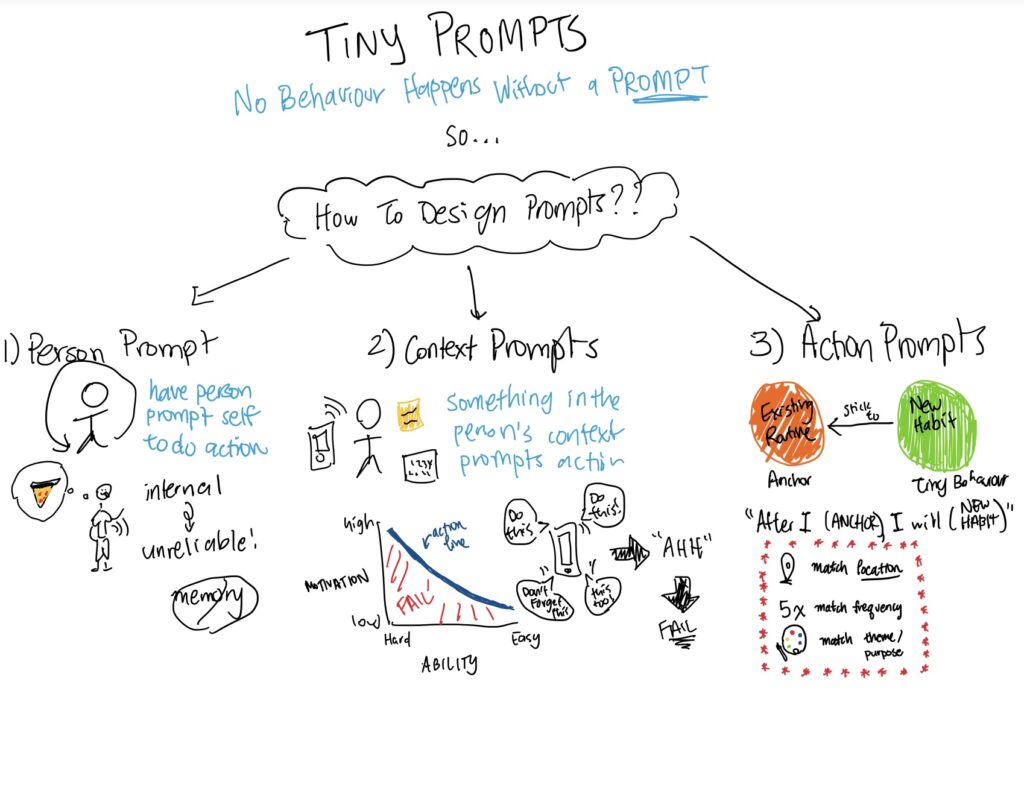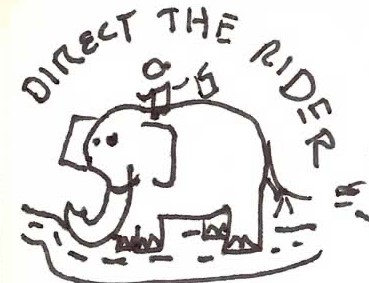For our tests, we chose the following three assumptions:
- Reading satisfaction: Users often feel too tired at the end of the day to enjoy reading
- Habit stacking: Habit stacking can be effectively implemented to help people read
- Reason for reading: Users usually read to accomplish something rather than doing it for fun
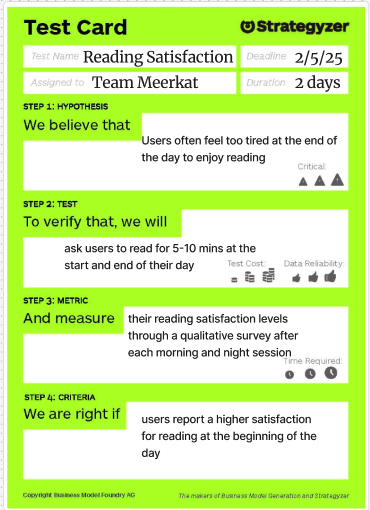
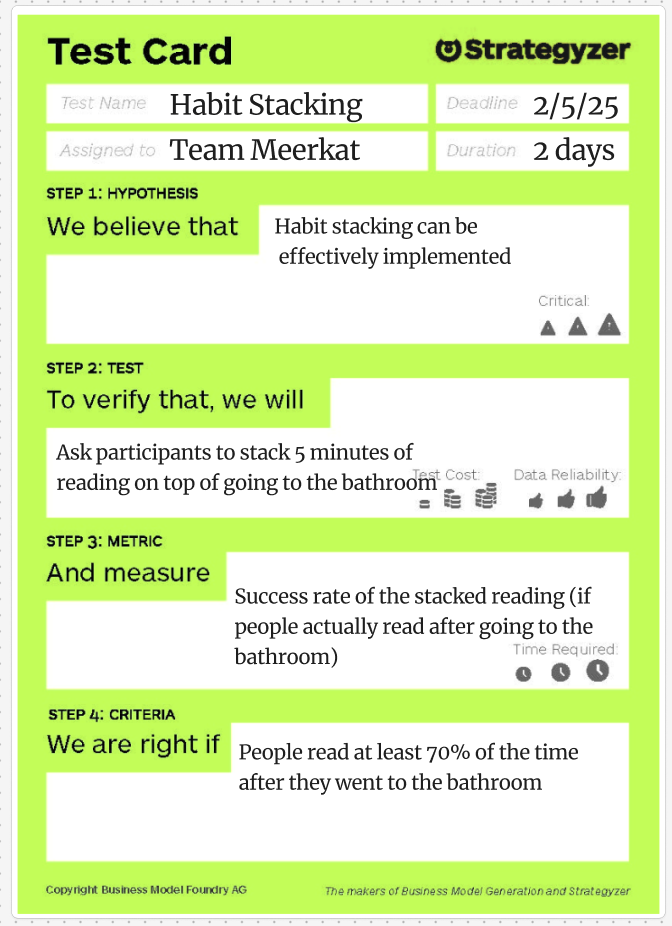
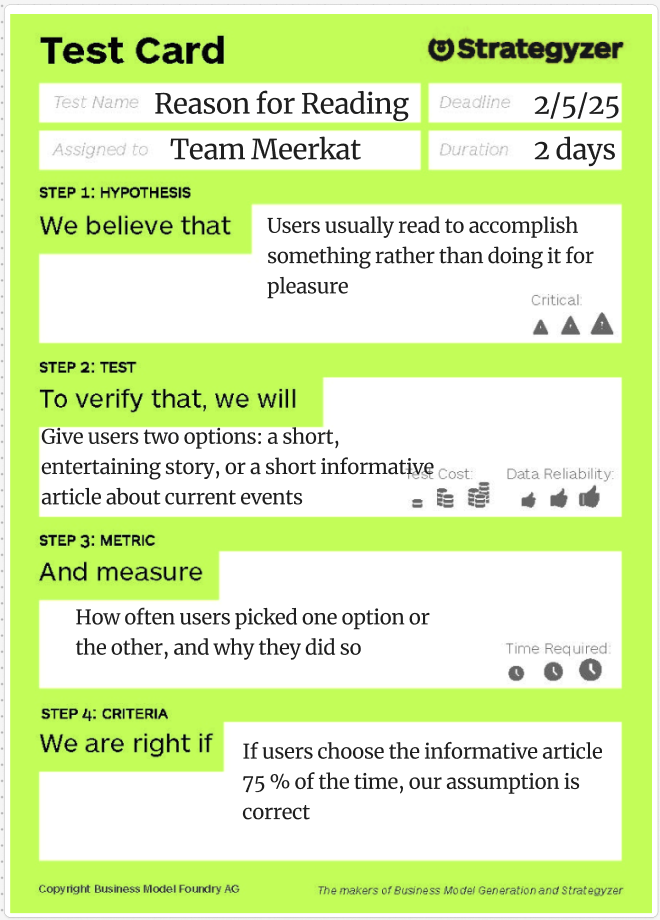
And here’s a link to our more detailed experiment design: https://www.figma.com/design/ZTDCqUzeox0GjRDRii0Q9b/Untitled?node-id=0-1&p=f&t=DIugjFge64kyQvL7-0
People we recruited:
We recruited four people for the reason for reading assumption, and three people for the other two. The users we recruited were a combination of young professionals and students, and some of them read often while others don’t read very much. The target audience for our product is college students and young professionals who want to build a habit of reading regularly, so we made sure to choose participants that wish to read more.
Assumption Test 1: Reading Satisfaction
In this experiment, we wanted to get a better sense for how users feel about reading in the morning and at night. What we found was that all three of the users reported a higher satisfaction after taking the morning survey vs. after taking the night survey. This helps give us a sense for when users may prefer to read, and if we should design an app that recommends reading during specific times. We learned that users definitely don’t want to read as much when they are tired, and even though they are satisfied after reading, it’s much more difficult to get motivated to reading if they are tired in the first place. For our next steps, we will consider ways to motivate users to read and consider time-based approaches. It could potentially be useful to tailor alerts or motivators to the user – in other words, send notifications or motivations to read during the time of the day that that specific user prefers to read.
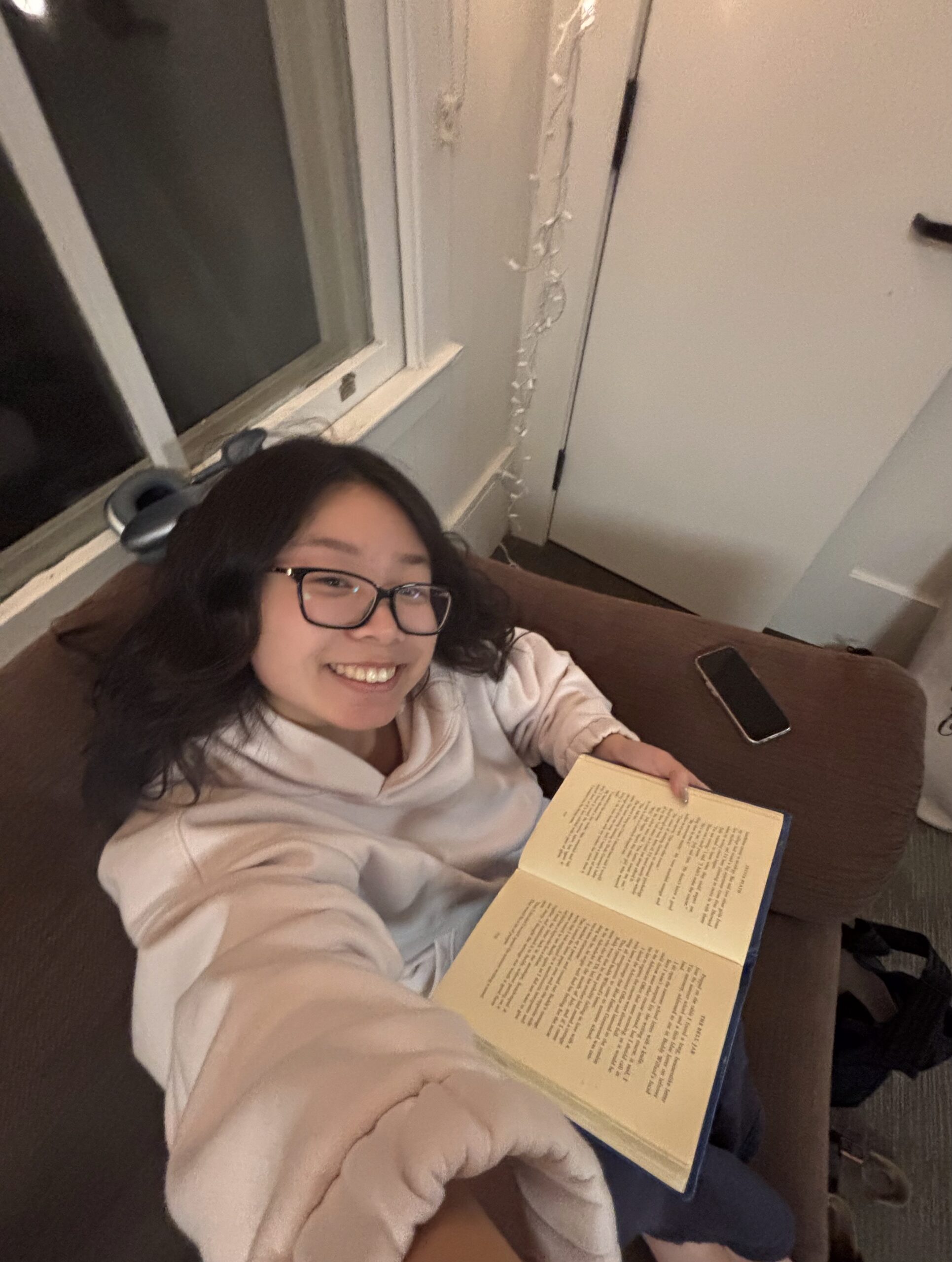
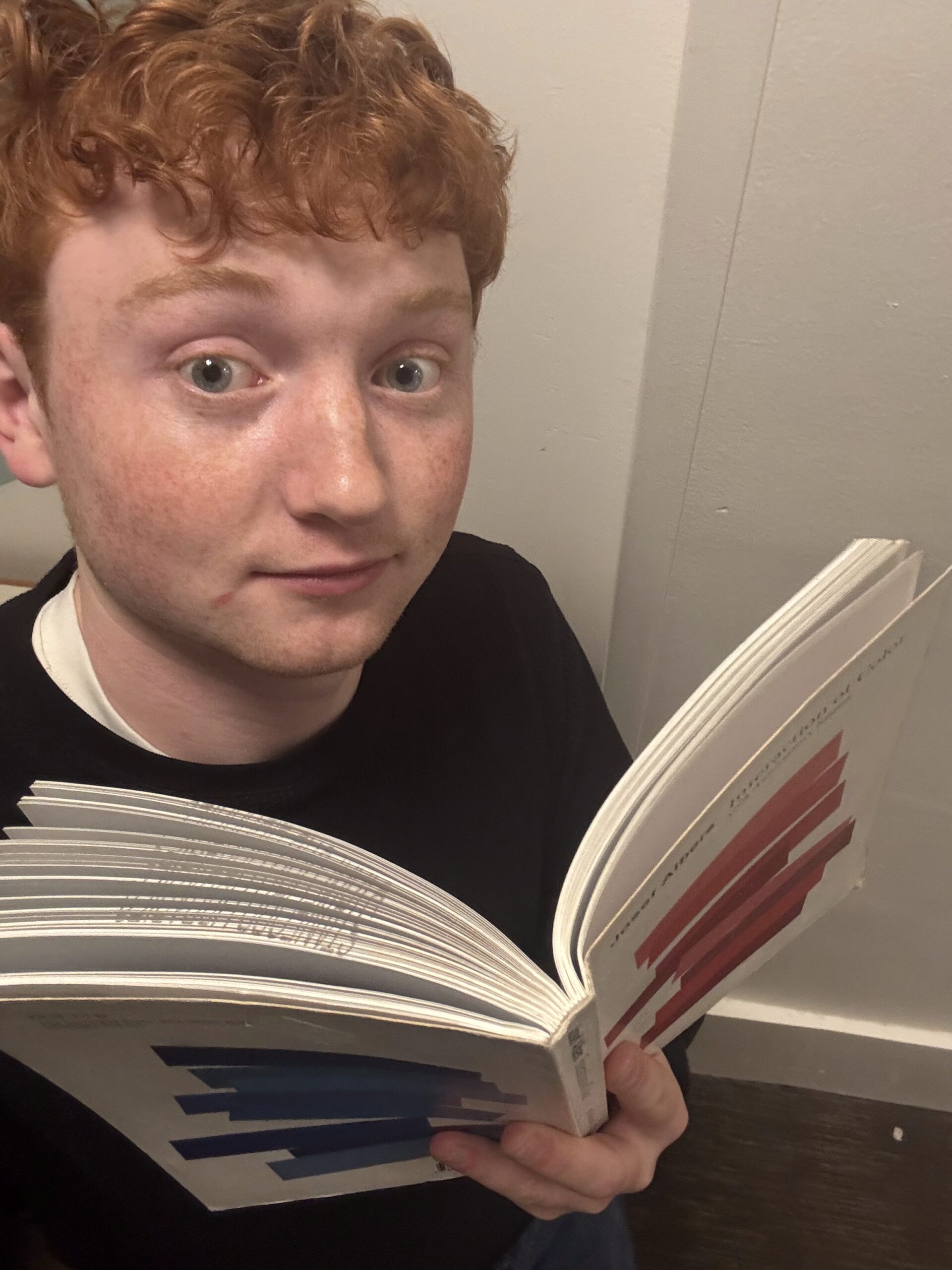
Assumption Test 2: Habit Stacking
For this experiment, we wanted to test out habit stacking, which is one of the concepts we had discussed in class. There are many different habits we do every single day, and we chose to experiment with going to the bathroom because it’s a habit everyone does multiple times per day, and often involves sitting down in peace. We found that on average, the users recorded reading while going to the bathroom about 64% of the time, which almost reached our “we are right if” goal of 70%. One key takeaway from the experiment was that habit stacking needs to give the user the opportunity to meaningfully engage with the target habit. In the case of going to the bathroom, users were sometimes only able to read for a minute or two, which isn’t always ideal. While the bathroom habit stacking seemed to be effective in getting users to read, it may be more realistic to read while going to the bathroom only if they’re going to be in there for more than a minute or two. Looking forward, we will try to find some other habits that users could potentially stack with reading, and compare pros/cons of those habits with going to the bathroom. Most importantly, this test showed that people were willing to read while going to the bathroom, so this is a promising result.
Assumption Test 3: Reason for Reading
Lastly, this experiment was designed to test the assumption that users (remember, our target audience is mostly college students) don’t really like to read for fun – they prefer to read to accomplish something or learn something new. After giving each of the users two options, a short entertaining story or an informative article, we found that 3/4 of the users picked the informative article. Therefore, the “we are right if” was correct because that represented 75% choosing that category. The takeaways from this are that college students (and young professionals) largely prioritize gaining knowledge when they read, and it was interesting to see that the one student that chose the short story was someone who already likes to read in her free time. As a result of this, we think that one approach to building a product could be encouraging or helping users find reading material that benefits them rather than being just for fun. Or, similar to the first test, perhaps it would be best to tailor these readings to the user.

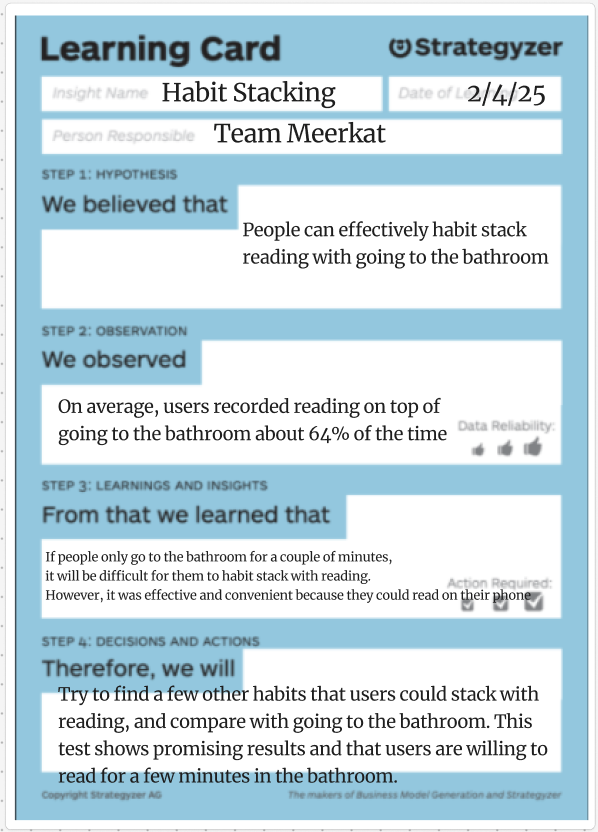
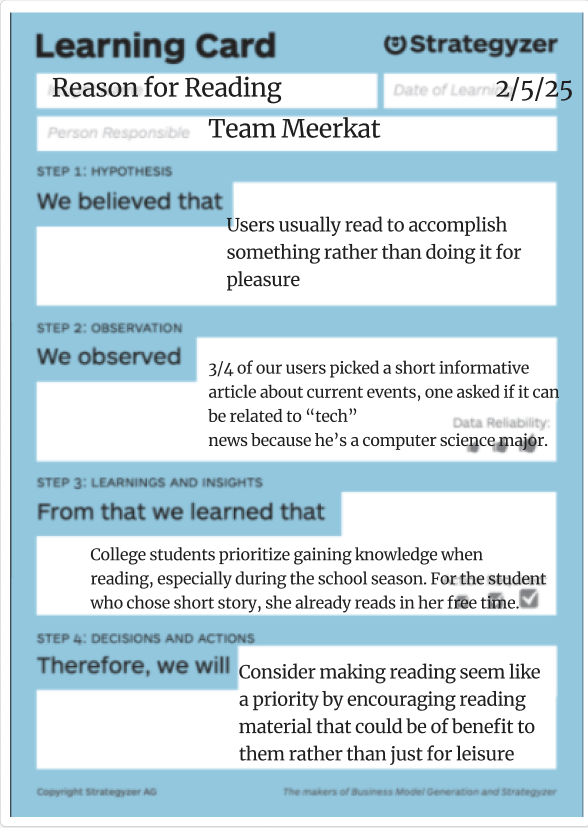
Overall Thoughts:
In all of the tests we performed, we are starting to see that there are a bunch of different forms of motivation when it comes to reading. Whether it’s finding the time to read, finding when you’re mentally most excited to read, finding what to read, etc., it’s important that we hit on those concepts in order to build an effective product. These tests helped us see what could be feasible and told us a little bit more about what these users think about reading, which will be helpful as we start to narrow down how exactly we want to help users read more.

